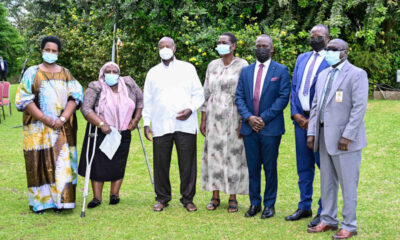Columnists
The future is in youth involvement in agriculture
If 60 per cent of the youth who graduate from universities, colleges took on agriculture, the country wouldn’t be crying of unemployment.
Recently, especially among the youth.
The President said that youth who have graduated in such “unmarketable” courses in the Arts and Humanities such as SWASA (Social Work and Social Administration), Literature, Conflict Resolution, etc, could find meaningful life in modern farming.
The President has consistently preached about socio-economic transformation through agriculture following a four-acre model: high value cash crops and food crops on selected plots/acres, and backyard activities such as poultry, apiary (bee keeping), dairy cattle, piggery, or fishing for those who live around swampy areas.
Agriculture has and still remains the main economic stay of the more than 80 per cent of the populations who mostly live in rural communities. Uganda’s agriculture is still of primitive subsistence nature with the elderly left to produce most of the foodstuff we consume, as the young and energetic people move to pursue white collar careers.
I keep wondering what would happen if the elderly peasant subsistence farmers suddenly decided to go on leave or strike. The country would starve to death! However, there must be a radical paradigm shift in thinking and action where we view agriculture as a business and a means to sustainable development. The days are long gone where most people looked at agriculture as an activity for the ‘failures’, especially those who would fail to get jobs in the corporate world.
A 2008 World Bank points out the enormous potential of agriculture in offering employment. Nationally, the agricultural sector is being prioritised, indeed the National Development Plan (NDP) 2010-2015 identifies it as one of the core growth sectors.
Despite the recognition of employment creation within the sector, youth participation in agriculture especially as farmers is declining not only in Uganda but in other African countries alike.
Apparently, the agriculture sector is not looked at as a viable sector of employment and remains highly unattractive to the youth due to the risks, intensive nature and low profitability.
We believe that for the youth to be gainfully employed in the agriculture sector, they should be targeted depending on their aspirations and resource accessibility.
The bulk of the youthful population- majority of whom are jobless and poor- should be motivated to take the lead in agriculture. The good news is that we are witnessing another kind of revolution where the corporates are abandoning the comforts of their air-conditioned offices and ‘sneak’ into the villages to engage in serious “projects” (read farming). Indeed, the fruits of their sacrifice of leaving the corporate life have paid off.
There is a young man I visited recently at his home in Mutundwe, a Kampala suburb, and I was startled by what I saw: He earns Shs 3million a week from supply of hybrid tomatoes, fruits, cabbages, cucumber, green pepper, egg plants, etc, which he grows in greenhouses on three acres of his compound. This young man (he was working in URA where he earned Shs 500,000 a month) invested Shs 20million in greenhouses and water supply system, and he harvests year in and year out.
The above demonstrates the abundant potential of agriculture to provide both real income for those engaged and also food security for the populations. If 60 per cent of the 400,000 youth who graduate annually from universities, colleges, institutions and other centres of learning took on agriculture, the country wouldn’t be crying about unemployment.
What needs to be done is for the government to work in partnership with the private sector to support the youth in farming enterprises by providing avenues and opportunities for steady or assured markets, access to credit, value addition chains, agricultural insurance, warehouse receipting, etc. The government should also expedite infrastructural developments mainly the roads to facilitate speedy transportation of agricultural products from the production centres to markets and vice versa.
The recent restructuring of the NAADS programme should focus more on the youth component in commercial agriculture. Initially, NAADS was designed to provide support to youth and women in the quest for socio-economic transformation by transforming rural subsistence farmers to modern farmers. This, unfortunately, hasn’t been the case as the programme has been riddled with corruption and mismanagement, leading to the disfranchisement of the intended beneficiaries- women and youth.
Comments














